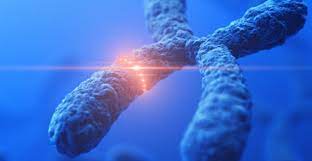Biotechnology has undergone significant advancements and transformations over the years. Here’s an overview of the key stages in the evolution of biotechnology:
- Traditional Biotechnology: Traditional biotechnology has been practiced for thousands of years, involving the use of microorganisms or biological processes for various purposes. Examples include fermentation processes for food and beverage production, the use of microbial cultures for cheese-making, and the production of antibiotics through microbial fermentation.
- Recombinant DNA Technology: The advent of recombinant DNA technology in the 1970s was a major milestone in biotechnology. This technique enabled the manipulation and transfer of genetic material between different organisms. It led to the development of genetic engineering and the production of recombinant proteins, such as insulin, growth hormones, and enzymes, using genetically modified organisms.
- Genomics and DNA Sequencing: The completion of the Human Genome Project in 2003 marked a significant breakthrough in biotechnology. The project involved sequencing the entire human genome, providing a comprehensive blueprint of human genetic information. The development of high-throughput DNA sequencing technologies has made DNA sequencing faster, more accurate, and more accessible, revolutionizing genomics research and applications.
- Omics Technologies: Omics technologies, such as genomics, proteomics, transcriptomics, and metabolomics, have emerged as powerful tools for studying biological systems at a large scale. These technologies allow for the comprehensive analysis of genes, proteins, RNA transcripts, and metabolites, providing insights into their functions, interactions, and regulatory mechanisms. Omics approaches have accelerated research in various fields, including medicine, agriculture, and environmental science.
- Synthetic Biology: Synthetic biology combines engineering principles with biology to design and construct new biological systems, components, and devices. It involves the synthesis and assembly of DNA sequences to create novel biological functions or organisms. Synthetic biology enables the engineering of microorganisms for the production of biofuels, bio-based chemicals, and pharmaceuticals, as well as the development of biosensors and bioremediation strategies.
- CRISPR-Cas9 Gene Editing: The discovery and development of CRISPR-Cas9 gene editing technology have revolutionized genetic engineering and biotechnology. CRISPR-Cas9 allows for precise and efficient editing of DNA sequences, enabling targeted modifications of genes in a wide range of organisms. This technology has opened up new possibilities for gene therapy, disease treatment, crop improvement, and basic research.
- Bioinformatics and Data Science: The growth of bioinformatics and data science has been instrumental in managing and analyzing the vast amounts of biological data generated by genomics, proteomics, and other omics technologies. Bioinformatics tools and algorithms facilitate the interpretation of complex biological data, enabling the discovery of patterns, relationships, and predictive models. Data science techniques enhance data integration, mining, and modeling in biotechnology research.
These advancements have led to the development of numerous applications in healthcare, agriculture, industry, and environmental conservation. Biotechnology continues to evolve rapidly, with ongoing advancements in areas such as gene editing, synthetic biology, nanobiotechnology, and personalized medicine, among others.
SHARE
